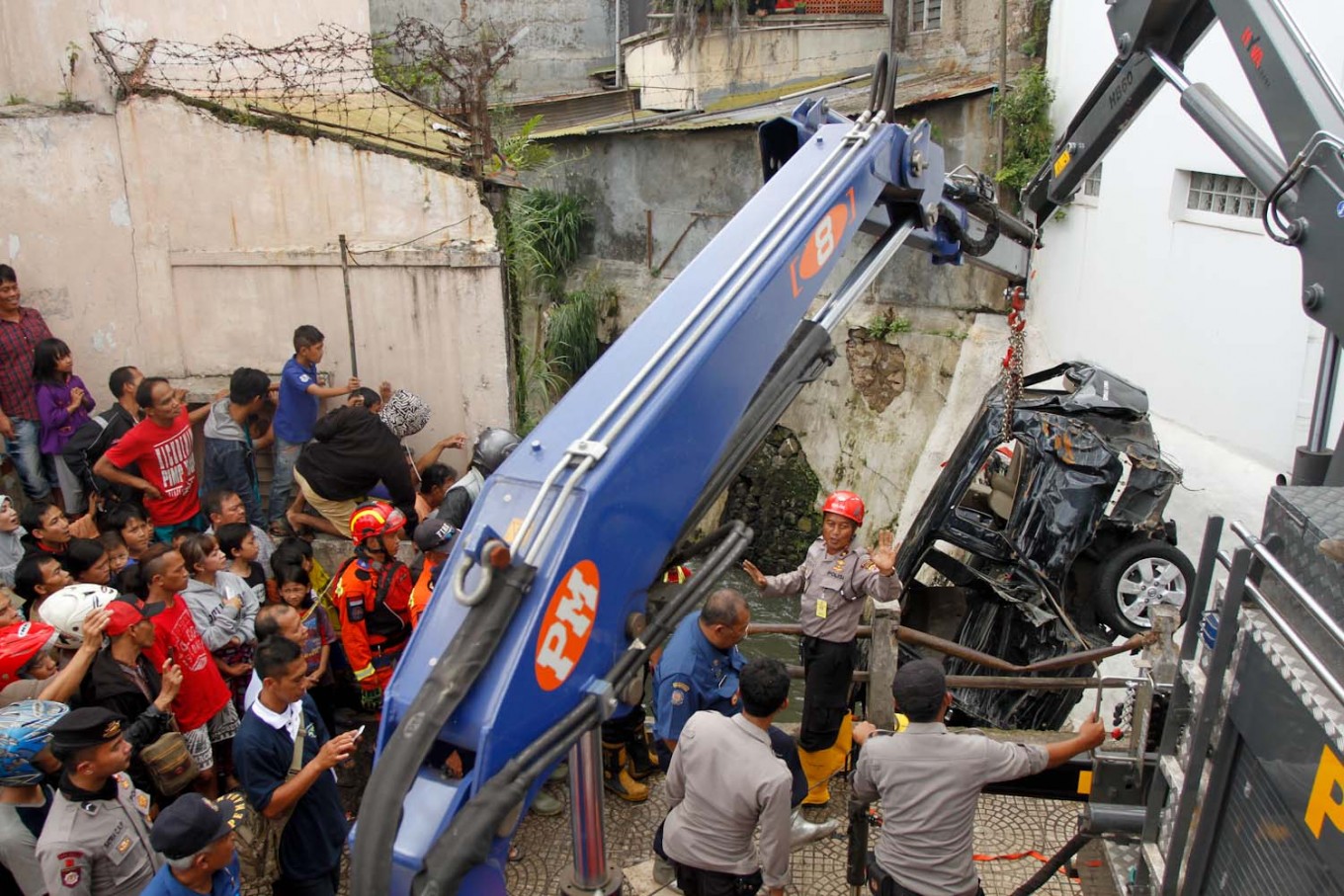Popular Reads
Top Results
Can't find what you're looking for?
View all search resultsPopular Reads
Top Results
Can't find what you're looking for?
View all search resultsGreater Bandung regional heads agree to work together to tackle floods
Change text size
Gift Premium Articles
to Anyone
F
ive regional heads in Greater Bandung have finally agreed to launch a collaborative program to address the threat of flooding on the heels of some of the worst flooding to hit the area in years.
The five regions are Bandung city, Bandung regency, Cimahi city, West Bandung regency and Sumedang regency.
Acting West Java governor Deddy Mizwar said the five regions had not coordinated with each other on flood mitigation and the results had been dismal.
“Now, we have a detailed engineering design and a five-year master plan, so it’s clear now who is doing what, when they will do it and from where the funds will come,” Deddy said in Bandung on Thursday.
The joint flood management system uses numerical modeling designed by the Water Resource Development and Research Center (PPPSDA).
“Based on our data, average rainfall has dropped, but it still causes floods. This is attributed to local effects related to the characteristics of watersheds,” said Ferry Indrawan from the PPPSDA.
The floods, added Ferry, occurred as a result of less water absorption in catchment areas north of Bandung as well as water being hampered from entering 13 tributaries in the rising Citarum River.
“Land subsidence due to excess groundwater pumping is also to blame,” said Ferry.
According to Ferry, flooding in the Greater Bandung area has been taking place for a long time.
Massive flooding once occurred in 1986, but after carrying out river normalization, the area of flooding diminished. Major floods reoccurred in 2010, 2013, 2014 and again this year.
“Based on the model of floods taking place once every five years, the flooded area could be as large as 3,461 hectares, but after the regions make efforts to address it, the flooded area could be reduced to 2,761 hectares. The floods don’t stop, but they can be minimized,” Ferry said, adding that estimations about the extent of floods excluded flood data from Bandung city.
Bandung city experienced severe floods in the past three weeks, causing several roads to be inundated and the Citepus River to overflow, which swept away at least three cars.
Bandung Mayor Ridwan Kamil claimed he was yet to see data on losses caused by the floods.
However, according to data from the West Java Disaster Mitigation Agency (BPBD), the losses suffered by residents at the end of October this year reached Rp 16.8 billion (about US$1.3 million).
West Java BPBD Emergency Section head Alif Nur Anhar said the losses mostly came from houses damaged by the floods. “The total amount of damage in Arjuna and Padjadjaran subdistricts [where 513 homes were submerged] reached Rp 10.3 billion,” said Alif.
In Cibadak subdistrict, the floods inundated 300 houses and caused up to Rp 6,075 billion in damages. “Apart from that, a school suffered losses of up to Rp 294 million,” added Alif.
Meanwhile, the central government will realize the construction of a water tunnel in Curug Jompong, West Bandung regency, West Java, to cope with flooding triggered by the overflowing of the Citarum River.
The design of the 350-meter long and 8.5-meter wide water tunnel, which resembles the mass rapid transport underground tunnel in Jakarta, will be completed by February next year and is expected to be operational by 2019.
Public Works and Public Housing Ministry Directorate of Water Resources’ Citarum River Basin Area Center (BBWS) head Yudha Mediawan said the water tunnel project was aimed at draining water more quickly from the Curug Jompong region, which was the only outlet for the Citarum River that has 13 tributaries.
Yudha added that the presence of rocks in Curug Jompong slowed down the flow of water in the river. When water discharged from the tributaries rises due to rain, often water that should have entered Citarum River instead overflowed into surrounding areas.
“The capacity of the tunnel is 500,000 cubic meters per second, compared to the capacity of the Citarum River during the biennial flooding, which is 565 cubic meters per second. When Citarum River’s water level is high, we will open the tunnel so that the river level will drop,” said Yudha in Bandung on Thursday.
Floods due to the overflowing Citarum River were still inundating at least three districts in Bandung regency as of Friday noon. The three districts, Baleendah, Dayeuhkolot and Bojongsoang, are all located south of Bandung city.










